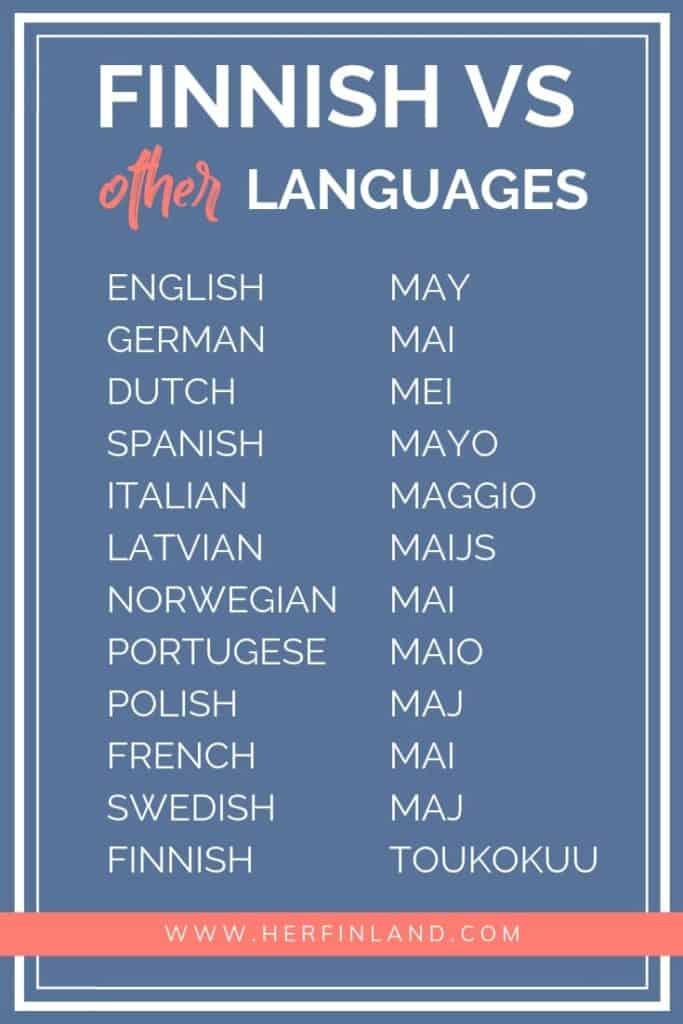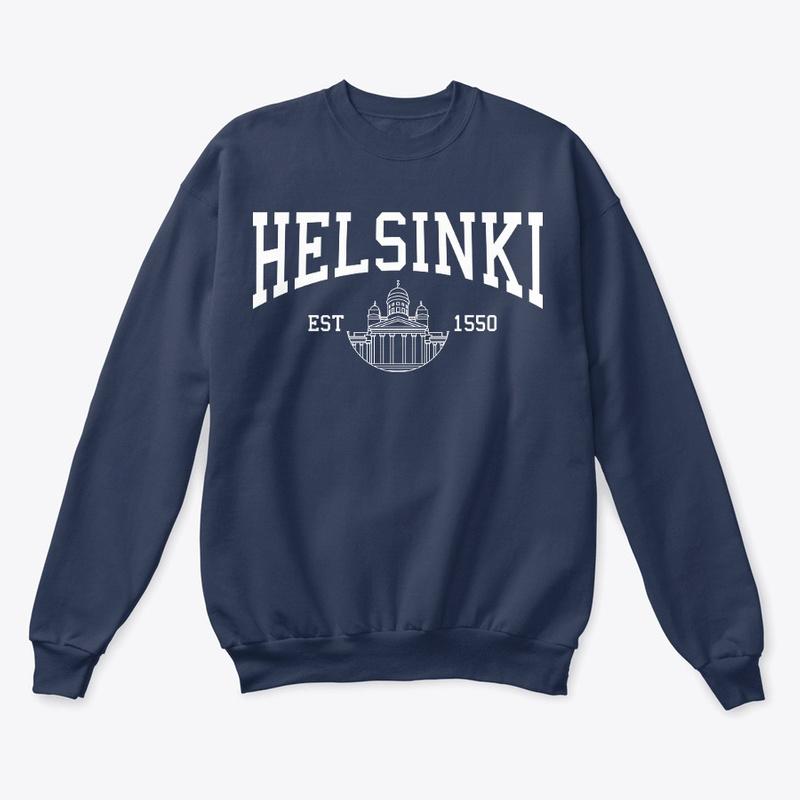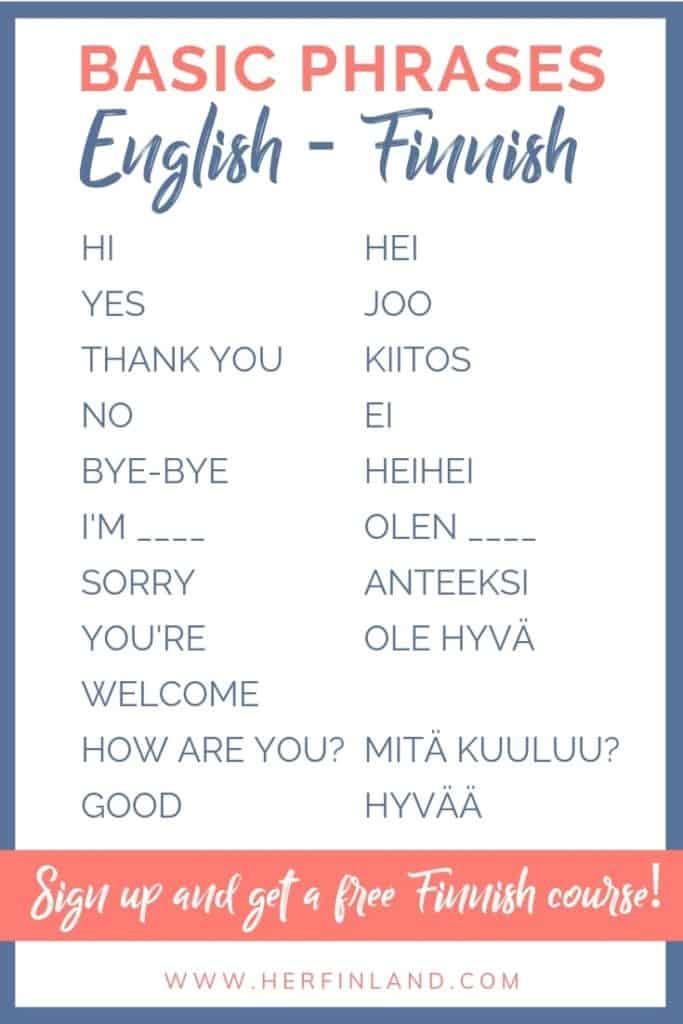The basics of the Finnish language… Take a deep breath. You got this.
First of all, I’m so happy to welcome you to our curious and quirky world!
Finnish may seem random to the majority of people around the world but we are going to take a tiny tour together to see what it’s all about.
I feel that everyone should know a couple of things about the Finnish language because it explains many hidden cultural things in Finland.
Allow me to help you nail down the foundations for your introduction to basic Finnish. And if you do want to master Finnish, it’s completely possible with so many easy, accessible resources available.

Table of Contents
Soft Introduction to Finnish Basics
You might have seen the hilarious memes of a word similar in every other language but Finnish.
It’s like other languages are united and playing football together. Then, the Finnish language arrives late and with ice-hockey skates. Finnish is not even remotely related to either language of our neighboring countries, Russia and Sweden.

Finnish belongs to the small Finno-Ugric family of languages. The closest “relatives” in this language family are Estonian and Hungarian. In comparison, most of the other languages spoken around Europe belong to the Indo-European languages.
We Finns are used to being different and we don’t have high expectations for a visitor to speak Finnish. That being said though, we are deeply honored if you try to speak a couple of words or are practicing our language. That makes us feel very special.
Five Key Rules about the Finnish Language
Finnish has a handful of core principles that are super easy and important to remember.
Finnish has no articles
“A,” “an,” or “the” – Finnish has no such things. It’s the reason why we always forget articles when speaking other languages.
Finnish has no ‘please’
We are straightforward as it is, but then there’s the fact that in Finnish we have no word for ‘please’.
There are plenty of ways to be polite in Finnish but none of them have ‘please’ in them. Maybe you can change your tone of voice, perhaps you can ask a question instead of demanding it. But “please” just simply doesn’t exist in Finnish. This nonexistent word is why Finns can be considered rude at first take.
Finnish has no gender
In Finland, there’s a strong emphasis on gender equality. (Did you know Finland was the first country to grant women equal political rights?) Well, gender equality is also revealed in the structure of our language.
Finnish words have no grammatical gender. There are no feminine, masculine, or neuter words. With that being said, we don’t even have “she” or “he.”
Our one word meaning the third person is hän and it can be a female or male or “it” (yep, sometimes pets can be called with hän). For example, if you used “Hän” in a sentence without context like “hän ran to the park;” it could translate to “she” or “he” or even “it.”
Finnish has no prepositions
Okay, here is the biggest reason why Finnish words look so weird and super long.
With Finnish, instead of tiny prepositions (in, on, to, for, etc.) in front of a noun, we use endings that are connected to the body of the word. Let me show you some examples:
a dog = koira
for a dog = koiralle
a chair = tuoli
on a chair = tuolilla
To understand a Finnish expression, in most cases, you need to check what is at the end of the word. There are only a couple of individual words that can be used as prepositions without needing to be connected to the body of the word.
FinNISH CONNECTION COLLECTION 🇫🇮

Finland-themed sweaters and accessories made-to-order. 🧡 Worldwide shipping.
Finnish has lots of compound words
Here’s another reason why Finnish words are long: we love compound words.
Most English compound words are also compound words in Finnish. Let’s look at some examples:
dishwasher = tiskikone [dish machine]
sailboat = purjehdusvene [sailing boat]
railroad = rautatie [iron road]
sunscreen = aurinkorasva [sun lotion]
On the other hand, some single English words are still compound words in Finnish. For example:
refrigerator = jääkaappi [ice box]
computer = tietokone [info machine]
chore = kotityö [house job]
The longest word in Finnish
The longest word in Finnish in its dictionary form is:
Lentokonesuihkuturbiinimoottoriapumekaanikkoaliupseerioppilas (61 letters long)
This translates as airplane jet turbine engine auxliary mechanic non-commissioned officer student. Is it actually a position in Finland? No. It’s a made-up word but grammatically there’s nothing wrong with it.
But even with long, compounded word monsters like this, Finnish grammar is super logical and based on rules without many exceptions.
Ten Simple Phrases in Finnish (+ Video Pronunciation)
Finns love it when you try to speak a little bit of Finnish. Below are the 10 most popular Finnish phrases in writing. Save this cheat sheet on Pinterest or take a screenshot.

Free Tools to Help You Learn Finnish
Free resources are the best place to start when learning any language. I handpicked 3 free resources to help you learn Finnish online.
My Free Finnish Online Class
Start learning Finnish with my completely free Finnish class, Spark Your Finnish. With this free course, you will take steps to learn conversational Finnish and how actual Finns talk (not that complicated textbook stuff).
Spark Your Finnish is the ultimate free, go-to resource for busy Finland lovers who want to learn easy methods of saying Finnish words.
After taking this class, you’ll know how to say any Finnish word and see why Finnish isn’t as difficult as they say. *Hint hint* Finnish has a phonetic alphabet, so every letter you see you will learn how to pronounce confidently no matter how complicated the word looks.
There are over 18 200 students already in my courses. By starting my free course, you’ll also gain helpful emails filled with free advice too. Enroll here in my FREE Finnish class – Spark Your Finnish.
Ready to speak finnish?

Join my praised free class and speak Finnish words in 20 minutes!
Online Pronunciation Dictionary
Want to hear other Finns besides me pronouncing Finnish? For that, I recommend a site called FORVO. It’s a free online pronunciation dictionary.
Just type the word into the search box, and native Finnish speakers will say the word for you so you know how it should sound. There are over 50 000 Finnish words & phrases on the website. The best way to practice is to get comfortable speaking Finnish out loud.
Online Dictionary
Sanakirja.org is a quality online English-Finnish-English dictionary. I find referencing an online dictionary to be very helpful in learning more diverse and specific vocabulary. Also, since it’s made by a Finn, it has a lot of options for different translations to Finnish. I use this dictionary all the time.
Fun and Creative Ways to Learn Finnish
Learning languages should be fun! Fun activities help our brain remember and absorb new words. If you want “to put on your Finnish antennas” (that’s a Finnish idiom which sounds silly in English), try:
4 Simple Methods You Can Try Today
- Listening to Finnish music in Spotify, for example, my Completely Finnish Playlist
- Finding Finnish recipes, translating them into English, and then cooking Finnish food
- Checking if your local library has any Finnish books
- Following Finnish-English Instagram accounts. Like mine. I have a free Finnish lesson every Tuesday.
Sending Informal Messages to Friends: Add these easy Finnish phrases
- Start with “Moi” or “Hei” followed by the recipient’s first name. “Moi” is more relaxed than “Hei”.
- If you’re friends, you can continue with “Mitä kuuluu?” aka “How are you?”
- It’s popular to just answer that you’re fine (if you are fine). You can say “Mulle hyvää” in spoken Finnish.
- End the letter with “terkuin Your name” or only “t. Your name”. Terkuin is spoken Finnish. It’s a relaxed way to say “best wishes”.
Sending More Formal Messages: Add these easy Finnish phrases
- Start with “Hei” followed by the recipient’s first name.
- End the letter with “Ystävällisin terveisin Your name”. Translated word-to-word from Finnish, it means “friendly wishes”.
How to Remember Finnish Words
Some studies suggest that it takes around 17 times to study a word in order to start remembering it. So, when it comes to learning words, repetition is key.
But that can sound mind-numbingly boring… You know, repeating something in your head or out loud over and over again.
However, this is just one type of repetition and is also ineffective.
That’s why I made you a list of ideas to use in your Finnish language journey.
- Preview. Glance over the material you want to learn. Check out titles, lessons, headings, pictures, and graphs.
- Take notes. Studies show that when you take notes, you’ll remember material far longer, even if you never review the notes you take. How cool is that?
- Sleep. Probably everyone’s favorite learning technique. But jokes aside, this really works. Let your brain do the night shift after you have given it some food for thought.
- Take a fun break. Go in the wilderness, take a bubble bath, read a funny novel… When you’re in a good mood, learning is so much easier.
- Review your notes. Go back to your notes and you can retain the information even longer.
- Combine learning + movement. You can, for example, clean the house and practice your pronunciation at the same time.
- Make associations. Draw a visual cue that helps you remember a phrase. Or, come up with a hand sign that describes a certain word for you.
- Test yourself. Works always.
- Teach others. Can’t find someone to teach? Use one of your social channels to talk about your observations.
Next steps? Use as many as you can on your Finnish language journey.
For example, this is how you combine taking notes, making associations and testing yourself.
When you’re trying to remember the word “sun” in Finnish, which is “aurinko,” try the following:
– Write the pair of words on a piece of paper.
– Draw a picture of the sun next to the line.
– Stand up & imagine you turn your head in the direction of the sun and feel yourself basking in the sun, your neck stretched.
When you try to remember the word, try to remember the physical movement attached to it and the symbol. Then suddenly, you can see the picture of the sun on the paper and next to it the correct word.
Are you ready to learn the Finnish language? Let me know in the comments!
Looking for more information about the Finnish language and culture? Check out some of my other posts:
Finnish Greetings: Hello in Finnish and 15 Other Great Greeting Words
Easy Rules for Finnish Small Talk
20 Cute Finnish Nicknames for Your Loved One
30 Famous Finnish Sayings about Life that Will Inspire You



War War Lin
Tuesday 21st of November 2023
Kiitos! Thank you, your website is very useful for learning about Finland.
Varpu
Monday 18th of March 2024
I'm happy that you're finding it useful, thank you!
Annikki Heikkinen
Monday 30th of November 2020
Hei. Olen kotoisin Suomesta ja arvostan sitä, että levität kulttuuriamme. Paljon kiitoksia, Varpu.
Varpu
Wednesday 2nd of December 2020
Oi kiitos paljon Annikki! Aivan ihana kuulla tämä! <3
Rhiannon
Monday 14th of October 2019
I've loved Finland all of my life....although I haven't visited yet! I actually learned to pronounce Finnish from singing along to certain Nightwish songs....a little bit, anyway. As far as i'm concerned, Finland is the most beautiful country in the world and has the most beautiful language I've ever heard. (I'm using it on a spiritual fantasy story I'm writing as what the characters call the "Old/High/Poet's Tongue", in which love-words and important documents and rituals are all conducted..)
Varpu Pöyry
Friday 18th of October 2019
Hei Rhiannon, wow your book sounds amazing. It's so wonderful that you have incorporated Finnish into it. Travel planning is half of the fun of traveling (at least for me :D). Have a lovely weekend!
Daryl Foxcroft
Thursday 26th of September 2019
Completed your Finnish Pronunciation Course. Think I've been pronouncing my mom's maiden name (Kemppainen) wrong. At least now I know correct Finnish pronunciation. Kiitos!
Varpu Pöyry
Monday 30th of September 2019
Hei Daryl! I'm so happy to hear that the course was helpful!! :) Thank you for taking the time and letting me know, I really appreciate it.
Alex
Wednesday 19th of June 2019
Moi,
What is the difference between jääkaappi and pakastin ?
Varpu Pöyry
Friday 21st of June 2019
Hei Alex, sure! Jääkaappi is the fridge and pakastin is the freezer. :) Hope that helped!